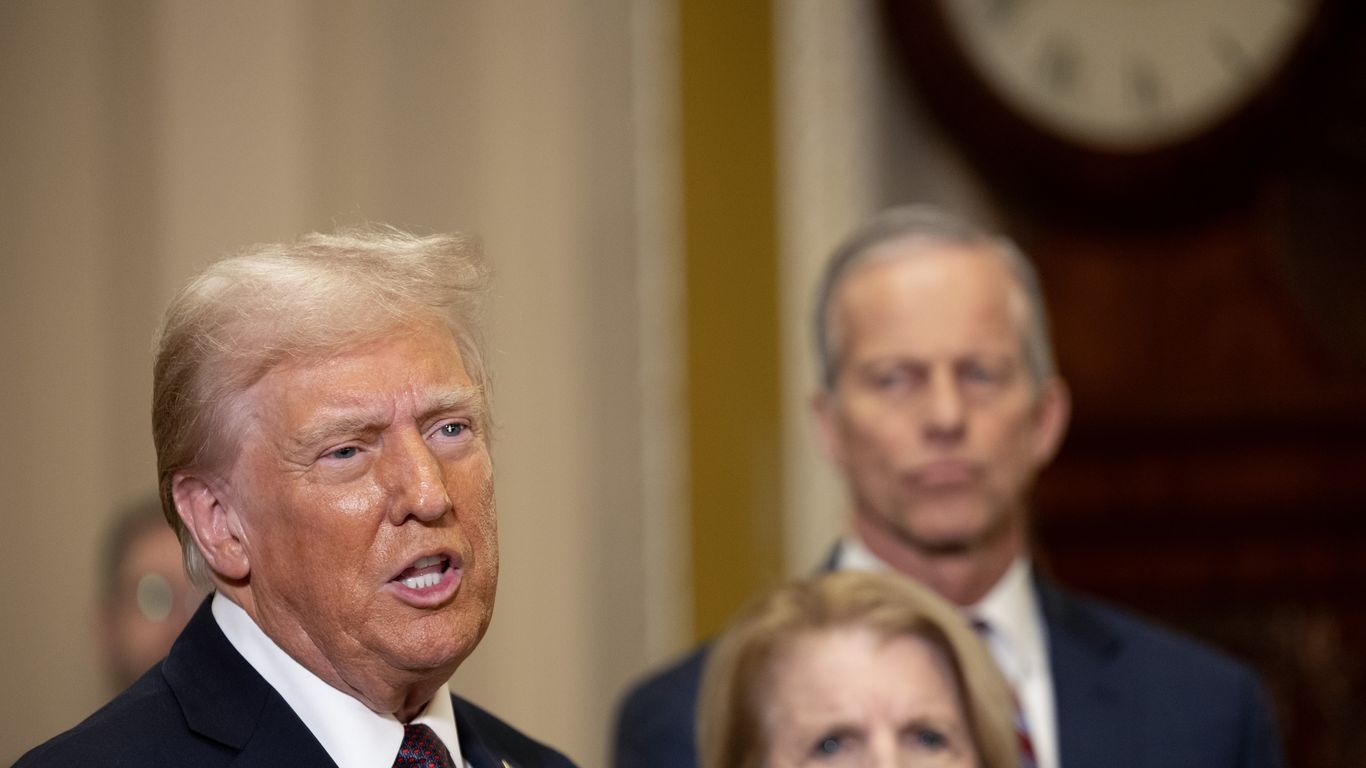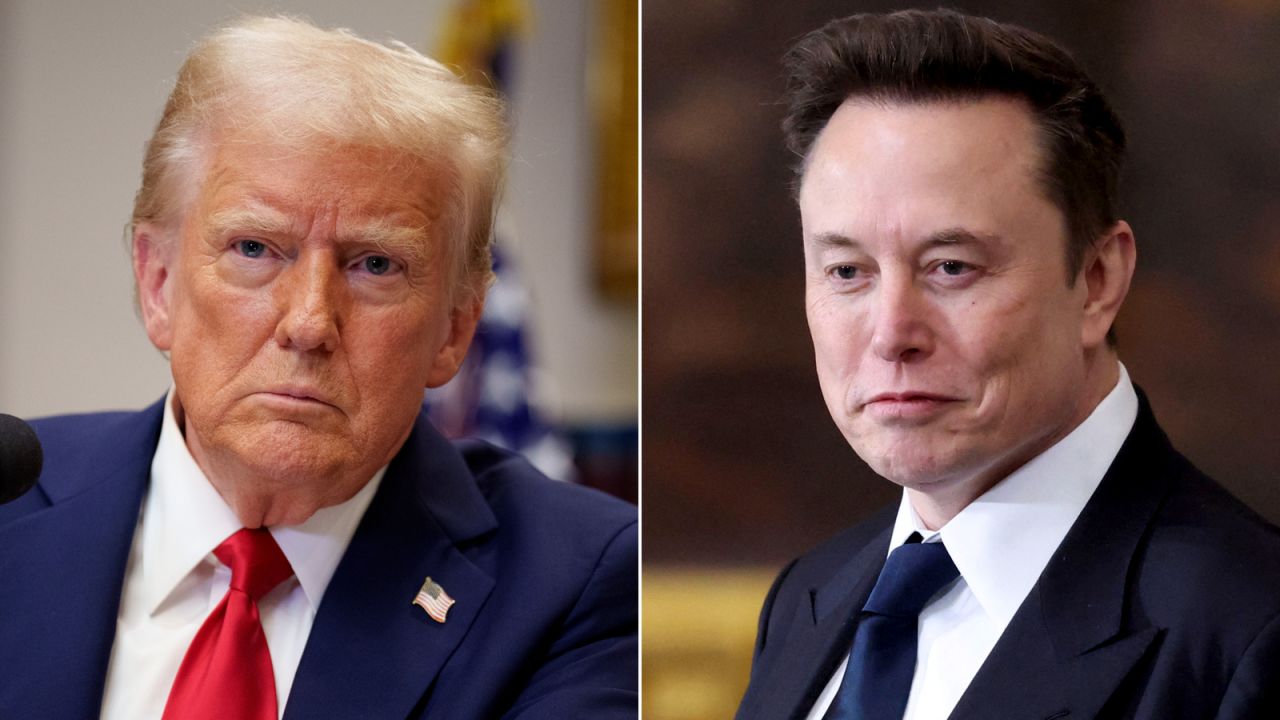The High Cost of Trump's Tax Bill

Introduction
The Senate's version of the tax bill has been touted by President Donald Trump as a "big, beautiful bill" that will bring major tax cuts for Americans. However, a recent report from the Congressional Budget Office (CBO) has revealed that the bill would add a staggering $3.3 trillion in new debt, far exceeding the House-passed version. This has raised concerns about the long-term effects of such a significant increase in national debt.
Background
Similar to the House of Representatives, the Senate is under Republican control and has been pushing for the passage of Trump's tax bill. Despite divisions within the party and pushback from Democrats, Republicans are determined to see the bill through in hopes of fulfilling Trump's campaign promises and boosting the economy.
Current Scenario
The CBO report has brought attention to the potential consequences of the bill, which could include cuts to programs such as Medicare. This is concerning as the bill is seen as a means to stimulate economic growth and create jobs, but at what cost? The CBO also predicts that the bill will only provide a short-term boost to the economy, with minimal impact in the long run.
Furthermore, the push for a speedy passage of the bill has raised concerns about the lack of thorough analysis and debate. The House bill was passed without a full understanding of its effects, and now the Senate is under pressure to pass a similar bill before the July 4th recess. This rush has led to further criticism and doubts about the bill's true intentions and potential consequences.
Conclusion
The tax bill has been a major focus for the Trump administration and the Republican party, with promises of major tax cuts and economic growth. However, the CBO's report has revealed that the bill could come at a high cost, adding trillions to the national debt and potentially causing cuts to important programs. With a push for quick passage, it is essential for thorough analysis and debate to take place to fully understand the long-term effects of this "big, beautiful bill."
About the Organizations Mentioned
Congressional Budget Office
The **Congressional Budget Office (CBO)** is a nonpartisan federal agency established in 1974 by the Congressional Budget Act to support Congress in budget and economic policy matters. Its core mission is to provide objective, impartial, and professional economic and budgetary analysis to help lawmakers make informed decisions about fiscal policy. The CBO serves as an independent alternative to the executive branch’s Office of Management and Budget, ensuring Congress has its own reliable data and projections[1][2][3][7]. CBO’s primary responsibilities include producing formal cost estimates for nearly every bill approved by congressional committees and publishing key reports such as the annual *Budget and Economic Outlook*. This flagship report offers baseline budgetary and economic projections over a 10-year horizon, assuming current laws remain unchanged. The agency also conducts analyses of the economic impacts of proposed federal spending and tax policies, aiding Congress in understanding long-term fiscal effects and budget deficits[1][3][5]. Since its inception, the CBO has become a critical institution in the U.S. budget process, recognized for its rigorous methodology and nonpartisan stance. It employs experts in economics and public policy who draw on a wide range of data, forecasting models, and external expert advice to maintain accuracy and credibility. The agency has adapted to the digital age by enhancing its publication and digital media divisions to better communicate its findings to both legislators and the public[3]. Currently, the CBO continues to provide vital analysis amid complex economic conditions, such as assessing the federal deficit, tax revenue changes, and spending trends. It remains strictly neutral, never making policy recommendations, but offering transparent methodologies that underpin its analyses[5][7]. For stakeholders in business and technology news, the CBO’s work is essential for understanding how fiscal decisions may influence economic growth, innovation funding, and federal investment priorities.
Republican Party
The **Republican Party**, also known as the **GOP (Grand Old Party)**, is one of the two major political parties in the United States, founded in 1854 primarily by anti-slavery activists opposing the Kansas-Nebraska Act and the expansion of slavery into U.S. territories[1][5]. It was formed from a coalition of former Whigs, Democrats, and Free Soil party members who shared opposition to slavery and a desire for a national political force promoting economic development and social order[2][5]. The party's early base included northern Protestants, businessmen, factory workers, professionals, and prosperous farmers. It strongly supported pro-business policies like the national banking system, the gold standard, railroads, and high tariffs[1][3]. Abraham Lincoln, the first Republican president elected in 1860, led the party through the Civil War, championing the abolition of slavery and the preservation of the Union. This solidified the GOP’s dominance in national politics for decades, especially in the North, while it remained weak in the South[1][5][6]. Historically, the Republican Party was instrumental in major social reforms, including the Emancipation Proclamation and the passage of the 13th, 14th, and 15th Amendments, which abolished slavery, guaranteed equal protection, and secured voting rights for African Americans, respectively[6]. The party also supported women's suffrage early on, backing the 19th Amendment[6]. In the 20th century, Republicans were associated with both conservative economic policies—favoring reduced taxes, limited government regulation, and individual economic freedom—and a strong national defense[7]. The party experienced ideological splits, notably in 1912 when Theodore Roosevelt led a progressive faction away from the conservative wing[1][5]. Today, the GOP continues to promote conservative social policies and states’ rights, opposing extensive federal intervention and advocating free-market principles[7]. For readers interested in business and technology,







